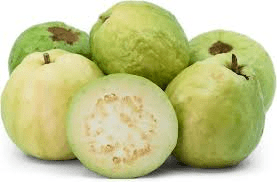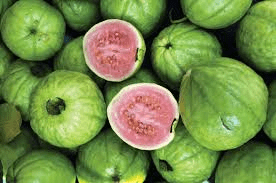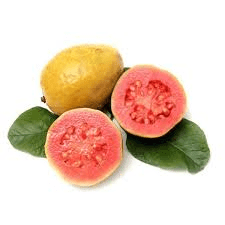To prepare guavas for exportation, start with the harvesting process. Pick guavas when they are fully mature but still firm to ensure the best flavor and durability for transport. Use clean tools to avoid bruising the fruit. After harvesting, sort the guavas based on size, color, and ripeness, removing any damaged or diseased fruit to maintain quality standards.
Next, thoroughly rinse the guavas with clean water to remove dirt, pesticides, and other contaminants. Use a food-safe sanitizer for added cleanliness. Allow the guavas to air dry or gently pat them dry with a soft cloth to prevent mold growth during storage and transport. Apply a thin layer of food-grade wax to retain moisture, extend shelf life, and enhance appearance.
Place the guavas in strong, ventilated boxes or crates, using protective liners and cushioning materials to prevent bruising and damage during transit. Pre-cool the guavas to the optimal storage temperature, typically around 8-10°C, to slow down ripening and extend shelf life. Store the guavas in a cool, dry place until they are ready for shipment.
Regularly inspect the guavas for signs of spoilage or damage to ensure all packed fruit meets export quality standards. Finally, prepare the necessary documents, such as phytosanitary certificates, commercial invoices, and export permits, to ensure smooth exportation.
When packaging guavas for exportation, choose strong, ventilated boxes or crates specifically designed for fruit to ensure durability and airflow. Line the bottom of each box with soft, absorbent material like tissue paper or foam to provide cushioning for the guavas. Arrange the guavas in a single layer if possible. If stacking is necessary, place protective layers between each layer of fruit to prevent bruising.
Fill any empty spaces with soft, protective materials like foam inserts or bubble wrap to keep the guavas secure and prevent movement during transit. Close and seal the boxes securely with strong tape to ensure the packaging is tamper-proof. Clearly label each box with necessary information, including the type of fruit, quantity, destination, and handling instructions for easy identification and handling.
Stack the boxes on pallets for easier handling and transport, securing them with straps or shrink wrap to prevent movement. Ensure the storage area for the packed guavas is cool and maintains the optimal temperature to prevent premature ripening.
Before shipment, check the packaging for any signs of damage or weakness and reinforce any areas as needed. Coordinate with a reliable shipping company experienced in handling perishable goods, ensuring they have the necessary facilities to maintain the required temperature during transport.
To successfully export guavas for profit, start with market research to identify target markets with high demand. Research market preferences, prices, and competition to make informed decisions. Maintain high standards of quality from harvesting to packaging to fetch better prices and ensure repeat business.
Understand and comply with export regulations of both the exporting and importing countries, including obtaining necessary certifications and adhering to phytosanitary standards.
Establish relationships with reliable buyers, distributors, and retailers in the target market to secure better deals and long-term contracts. Set competitive prices that cover production costs while ensuring a reasonable profit margin, considering factors like transportation costs, tariffs, and market prices.
Develop a strong brand for your guavas, using attractive packaging and effective marketing strategies to attract buyers and build brand recognition. Plan and manage the logistics of transporting guavas to the target market, ensuring timely delivery to maintain freshness and quality.
Obtain insurance to cover potential risks during transportation, such as damage or loss of goods, protecting your investment and ensuring peace of mind.
Stay updated with market trends and consumer preferences to adjust strategies and maximize profits. Collect feedback from customers and make necessary improvements to satisfy customers, increasing the likelihood of repeat business and recommendations.
How to Process Guavas for Exportation

1. Harvesting: Pick guavas when they are fully mature but still firm. This ensures they have the best flavor and durability for transport. Use clean tools to avoid bruising the fruit.
2. Sorting: Separate guavas based on size, color, and ripeness. Remove any damaged or diseased fruit to maintain quality standards for exportation.
3. Washing: Rinse guavas thoroughly with clean water to remove dirt, pesticides, and other contaminants. Use a food-safe sanitizer for an extra layer of cleanliness.
4. Drying: Allow guavas to air dry or use a soft cloth to pat them dry. This step is crucial to prevent mold growth during storage and transport.
5. Waxing: Apply a thin layer of food-grade wax to the guavas. This helps to retain moisture, extend shelf life, and enhance their appearance.
6. Packing: Place guavas in strong, ventilated boxes or crates. Use protective liners and cushioning materials to prevent bruising and damage during transit.
7. Pre-cooling: Cool guavas to the optimal storage temperature (usually around 8-10°C). This helps to slow down ripening and extends shelf life.
8. Storing: Store guavas in a cool, dry place until they are ready for shipment. Proper storage conditions help maintain quality and freshness.
9. Quality Control: Inspect guavas regularly for any signs of spoilage or damage. Ensure all packed fruit meets export quality standards.
10. Documentation: Prepare necessary documents such as phytosanitary certificates, commercial invoices, and export permits. Accurate paperwork is crucial for smooth exportation.
Read Also: Egg Formation and Production Process (From Day-Old to First Lay)
How to Package Guavas for Exportation

1. Selecting Packaging Material: Choose strong, ventilated boxes or crates specifically designed for fruit. This ensures durability and airflow.
2. Lining the Boxes: Line the bottom of each box with soft, absorbent material like tissue paper or foam. This provides cushioning for the guavas.
3. Placing the Guavas: Arrange guavas in the box in a single layer if possible. If stacking is necessary, place protective layers between each layer of fruit to prevent bruising.
4. Adding Cushioning: Fill any empty spaces with soft, protective materials like foam inserts or bubble wrap. This keeps the guavas secure and prevents movement during transit.
5. Sealing the Boxes: Close and seal the boxes securely with strong tape. Ensure that the packaging is tamper-proof to maintain the integrity of the fruit.
6. Labeling: Clearly label each box with necessary information including the type of fruit, quantity, destination, and handling instructions. Proper labeling helps in easy identification and handling.
7. Palletizing: Stack boxes on pallets for easier handling and transport. Secure the boxes to the pallets using straps or shrink wrap to prevent movement.
8. Temperature Control: Ensure the storage area for the packed guavas is cool and maintains the optimal temperature to prevent premature ripening.
9. Inspecting Packaging: Before shipment, check the packaging for any signs of damage or weakness. Reinforce any areas as needed.
10. Shipping Arrangements: Coordinate with a reliable shipping company experienced in handling perishable goods. Ensure they have the necessary facilities to maintain the required temperature during transport.
How to Export Guavas for Profits
1. Market Research: Identify target markets with high demand for guavas. Research market preferences, prices, and competition to make informed decisions.
2. Quality Assurance: Maintain high standards of quality from harvesting to packaging. High-quality guavas fetch better prices and ensure repeat business.
3. Compliance with Regulations: Understand and comply with the export regulations of both the exporting and importing countries. This includes obtaining necessary certifications and adhering to phytosanitary standards.
4. Building Relationships: Establish relationships with reliable buyers, distributors, and retailers in the target market. Strong relationships can lead to better deals and long-term contracts.
5. Pricing Strategy: Set competitive prices that cover production costs while ensuring a reasonable profit margin. Consider factors like transportation costs, tariffs, and market prices.
6. Branding and Marketing: Develop a strong brand for your guavas. Use attractive packaging and effective marketing strategies to attract buyers and build brand recognition.
7. Logistics Management: Plan and manage the logistics of transporting guavas to the target market. Ensure timely delivery to maintain freshness and quality.
8. Insurance: Obtain insurance to cover potential risks during transportation, such as damage or loss of goods. This protects your investment and ensures peace of mind.
9. Monitoring Market Trends: Stay updated with market trends and consumer preferences. This helps in adjusting strategies to maximize profits.
10. Customer Feedback: Collect feedback from customers and make necessary improvements. Satisfied customers are likely to become repeat buyers and recommend your products to others.
Read Also: How to Identify Poultry Sick Birds and Cure Them
Frequently Asked Questions (FAQs) About Guavas

1. What is the best time to harvest guavas?
Harvest guavas when they are fully mature but still firm. This usually occurs when they change color and emit a sweet aroma.
2. How should guavas be stored before packaging?
Store guavas in a cool, dry place at temperatures around 8-10°C to slow down ripening and extend shelf life.
3. What materials are best for packaging guavas?
Use strong, ventilated boxes or crates with soft, absorbent liners to protect guavas during transit.
4. How can I ensure my guavas meet export quality standards?
Regularly inspect guavas for damage or spoilage, and maintain high standards from harvesting to packaging.
5. What documents are required for exporting guavas?
Common documents include phytosanitary certificates, commercial invoices, and export permits.
6. How can I find buyers for my exported guavas?
Conduct market research, attend trade fairs, and network with distributors and retailers in the target market.
7. What are the main challenges in exporting guavas?
Challenges include maintaining quality during transit, complying with export regulations, and finding reliable buyers.
8. How can I extend the shelf life of exported guavas?
Use pre-cooling and proper storage temperatures, and apply a thin layer of food-grade wax to retain moisture.
9. What insurance should I consider for exporting guavas?
Obtain insurance to cover potential risks such as damage or loss of goods during transportation.
10. How can I make my guavas more attractive to buyers?
Focus on high-quality production, attractive packaging, and effective marketing strategies to build a strong brand.
Read Also: The Importance of Ethics in Business





